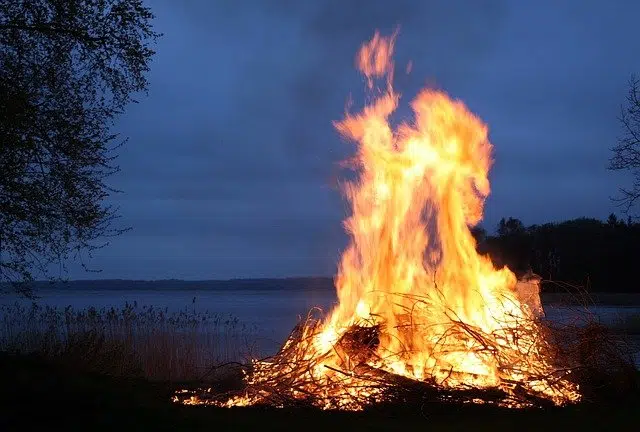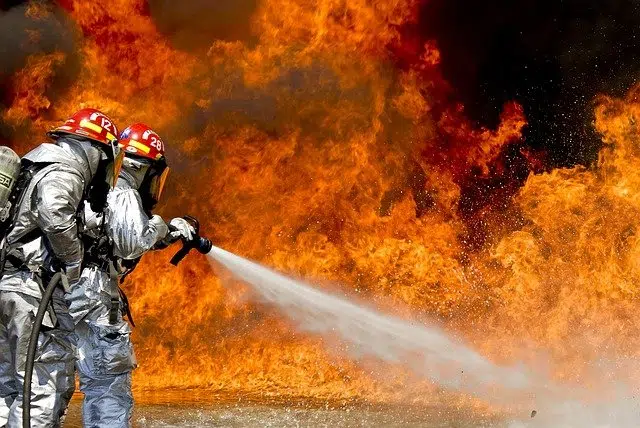
Fire is produced by combustion.
From the Latin focus , fire is the heat and light produced by combustion . Fire is born from a chemical oxidation reaction and involves the generation of flames and the emanation of water vapor and carbon dioxide. It could be said that fire is the visual manifestation of the aforementioned combustion process.
The temperature at which a material catches fire is known as the flash point . When the oxidation reaction begins, the heat released allows the fire to be maintained for a certain period of time . The amount of energy produced by a fuel can be expressed by its calorific value .
The temperature and color of the flame depend on the type of gases released during the combustion process. When the wood burns, it generates orange, red and yellow flames. Hydrocarbons, on the other hand, usually produce bluish flames.
The human being and the fire
The cultural value of fire in the development of man is incalculable. Anthropologists believe that humans became aware of their superiority over other animals by mastering fire. When man discovered how to generate it, he began to use it to produce heat and defend himself, since animals flee from flames.
Friction was the original method of lighting fire, followed by percussion (hitting two stones together to produce a spark). Nowadays, fire can be lit using tools such as matches and lighters . In addition to all the above, we cannot ignore that the term fire is also used to refer to the burners that are used in the kitchen to prepare any dish.

When the fire gets out of control, firefighters are called upon to work to extinguish it.
The concept in Western cosmogony and alchemy
In the same way, we must not forget that, within what would be the scope of alchemy or Western cosmogony (scientific theory that deals with the origins and creation of the world), it is established that fire is one of the four fundamental elements. . Thus, it always appears in conjunction with water, earth and air.
No less interesting is to highlight that there is an expression that is used with some frequency, that is part of our cultural heritage and that makes use of the term that we are now analyzing in depth. We are referring to the so-called "will-o'-the-wisp." This is a phenomenon that occurs mainly in cemeteries and swamps and basically consists of the birth of small flames that float a few meters from the ground. Those are flames that are produced when materials that are in the process of putrefaction ignite, whether they are plant or animal.
The fireworks
Likewise, we cannot ignore that there are what are known as fireworks. These are the set of flames, sparks and smoke that are produced when rockets, firecrackers and all types of pyrotechnic devices are lit that give rise to a beautiful spectacle where lights, sound and color become the protagonists. Parties and shows of various kinds are where those take place.
Finally, it should be noted that an uncontrolled fire that burns something that was not intended to burn is known as a fire .
